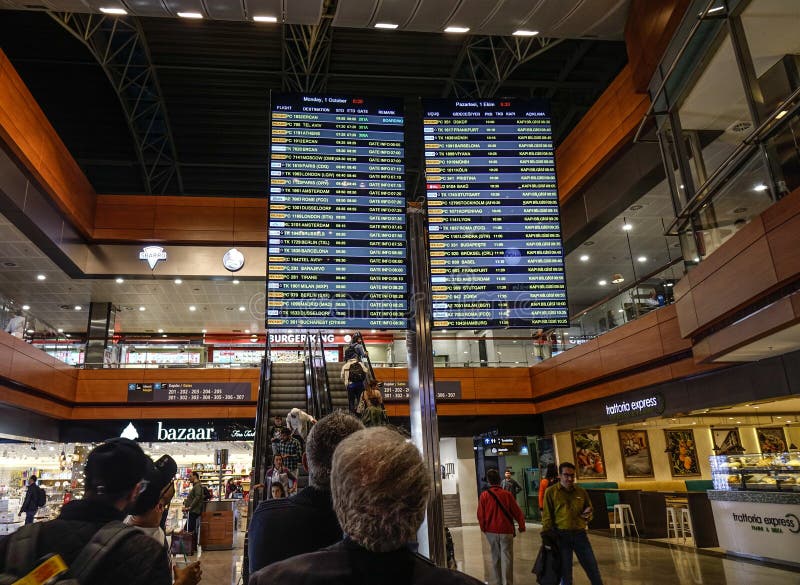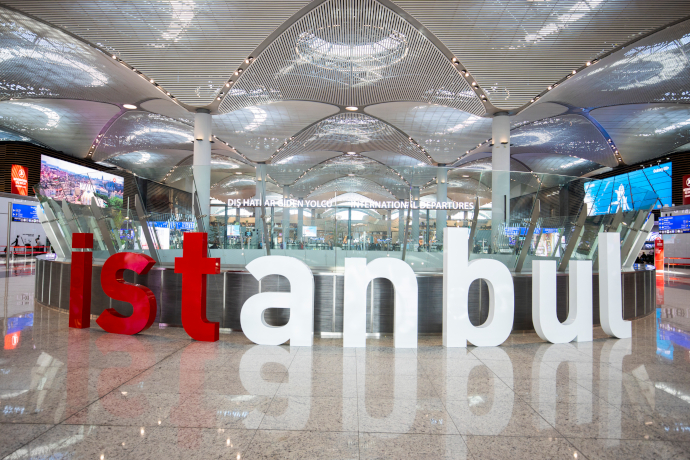
The construction of the airport is taking place in several stages, expanding the airport and its facilities over time.

The control tower is in the shape of the Turkish national flower, the tulip. Testing of navigational and electronic systems with DHMİ aircraft had begun on. It was reported that the first test landing at the airport would take place on 26 February 2018 however, the first landing took place on 20 June 2018. The inauguration of the airport took place on the planned date of 29 October 2018. The groundbreaking ceremony took place on 7 June 2014, though construction only started in May 2015 after the land was officially handed over. The completion date of the construction's first stage was officially set for 2018 – 42 months after the finalization of the tender's approval. The Turkish joint venture consortium of Cengiz-Kolin- Limak-Mapa- Kalyon won the tender and were obliged to pay the government €26.142 billion including value-added tax for a 25-year lease starting from 2018. In addition, Haptic, based in London, was also a part of the team.Īt the bidding session on, only four out of fifteen Turkish and two foreign companies that were qualified as bidders showed up. The team had the Nordic Office of Architecture from Norway. Grimshaw, based in London, headed this design team. Further, passengers in a number of 342 million were assured over a period of 12 years. The government assured a consortium for both construction purposes and operation. This sum did not include any financing cost. The project aimed at utilizing around €7 billion. Also, the handing over of land would get over. It was decided that in a duration of 42 months, stage 1 would be complete. Considering the time when the airport was being planned, this serving capacity could be the biggest across the globe. Their number was estimated to be around 200 million. It is said that with the completion of these stages, the airport being constructed could serve many passengers.

4 stages of construction were decided for this project. Construction įor Istanbul Airport, a tender was made for its construction as well as its functioning. However, the Ministry of Forest and Water Management claimed the exact number of trees cut and moved would only be revealed after construction was complete. Īccording to the Environmental Impact Assessment (ÇED) report published in April 2013, there were a total of 2,513,341 trees in the area and 657,950 of them would need to be cut indispensably, while 1,855,391 trees would be moved to new places. The area encompassed old open-pit coal mines, which were later filled with soil. The distance between Istanbul Airport and Atatürk Airport is approximately 35 km (22 mi). Some 6,172 hectares (15,250 acres) of this area was state-owned forest. The area is a 7,600-hectare (19,000-acre) region near Lake Terkos.

It was decided to construct the new airport at the intersection of roads to Arnavutköy, Göktürk, and Çatalca, north of central Istanbul and between the Black Sea coast towns of Yeniköy, Tayakadın and Akpınar. In terms of area airports, the six London-area airports serve more than 150 million passengers a year, while the three Paris-area airports serve around 100 million passengers a year. In 2017, the two Istanbul airports handled over 100 million passengers. Since 2013, it has ranked among the five busiest airports in Europe by passenger traffic. This was observed when the growth rate of traffic was at an average of 20 percent in one year, 2013 onward.Ītatürk Airport was one of the busiest airports in Europe. In addition, in 2015, it had already served flyers equivalent to a number as big as 28 million. This terminal could serve 25 million passengers. Sabiha Gökçen Airport was found to have reached its maximum capacity for the terminal. The aircraft of Turkish Airlines was shifted to Sabiha Gökçen Airport as not much space was available for parking at Atatürk Airport. This airport aimed to function for Istanbul. Hence, the decision to build another airport was taken. This increased the issues of congestion relating to air traffic. As a result of this, the Turkish Airport Authority was unable to let charter flights, extra cargo, etc., be available at Atatürk Airport. This limited the growth of the airport as well as its city.

Problems relating to less space at Atatürk Airport made it difficult to build an additional runway.


 0 kommentar(er)
0 kommentar(er)
